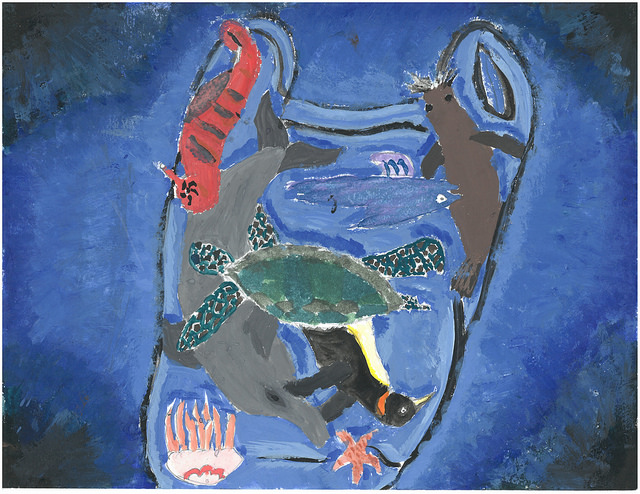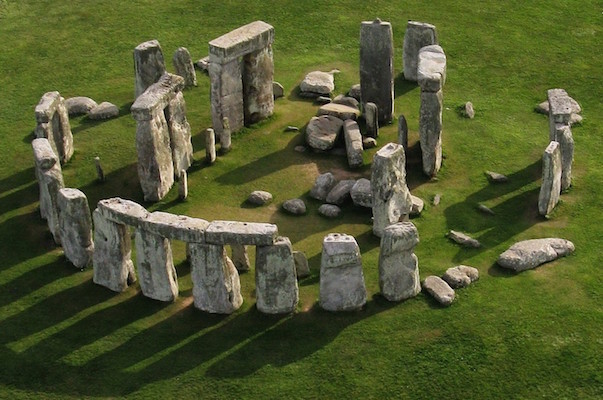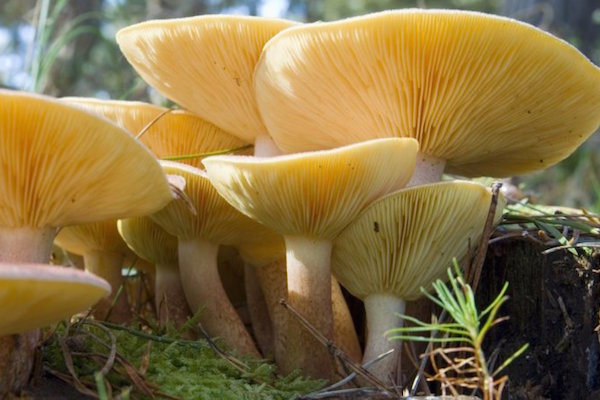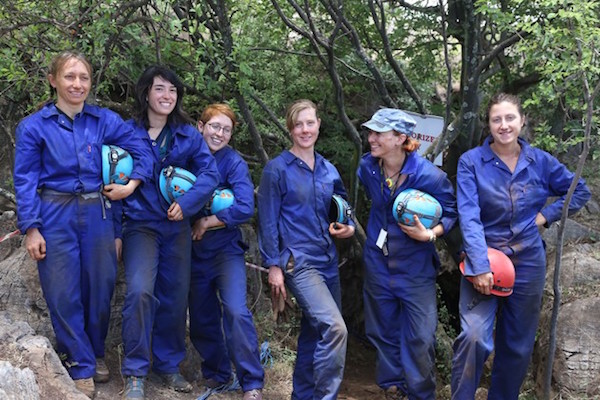Plastic bags are a global problem. Annually, some one trillion of them are used around the world, and fewer than 5 percent are actually recycled. This means a massive buildup of waste, litter, and chemical toxins in the environment. Material engineering professor Nicola Everitt, from The University of Nottingham in the U.K., thinks she might have the solution: Shrimp shells. For the past year, Everitt has been working to turn crushed up crustacean shells into biodegradable plastic bags so that they can be used in Egypt, a country with a severely inadequate waste disposal system. Right now, she and the team in Egypt are working to optimize the Chitosan extraction process, which takes about three days to complete. If the team is successful in Egypt, Everitt plans to explore production in other countries where there is a similar abundance of shrimp shell waste, like Thailand.
Continue reading... →The remains of 14 women believed to be of high status and importance have been found at Stonehenge, the iconic prehistoric monument in Wiltshire, England. The discovery, along with other finds, supports the theory that Stonehenge functioned, at least for part of its long history, as a cremation cemetery for leaders and other noteworthy individuals, according to a report published in the latest issue of British Archaeology. During the recent excavation, more women than men were found buried at Stonehenge, a fact that could change its present image. In almost every depiction of Stonehenge by artists and TV re-enactors we see lots of men, a man in charge, and few or no women,” archaeologist Mike Pitts, who is the editor of British Archaeology and the author of the book “Hengeworld,” told Discovery News. “The archaeology now shows that as far as the burials go, women were as prominent there as men. This contrasts with the earlier burial mounds, where men seem to be more prominent.” Pitts added, “By definition — cemeteries are rare, Stonehenge exceptional — anyone buried at Stonehenge is likely to have been special in some way: high status families, possessors of special skills or knowledge, ritual or […]
Continue reading... →Whether it’s setting up a distributed network or devising the best way to share resources, businesses are learning that the natural world has a lot of these things figured out. An LGBTQ activist, a green-business consultant, and a nun walk into a redwood forest… New take on an old joke, right? But it really happened. These three were just a few of a diverse set of participants who took part in the first-ever training linking social innovation and biomimicry. The practice of looking to emulate nature for innovation and sustainable solutions (a.k.a. biomimicry) has been on the rise for decades. Since the 1997 publication of Janine Benyus’s seminal book Biomimicry: Innovation Inspired by Nature, the methodology has especially taken root in the fields of design, architecture, and engineering. There are hundreds of biomimetic examples–like the bullet train that borrows the aerodynamic form of a kingfisher’s beak; or non-toxic adhesives inspired by blue mussels. Now biomimicry is taking root in social innovation and could no doubt be adaptable in organizational behavior more generally. It’s not just about nature’s “design.” The living world also has much to teach us about adaptation, resilience, cooperation, and networked systems that thrive functioning together. What if your company could distribute […]
Continue reading... →Lee Berger led a team of trowel-blazing scientists behind one of the richest collections of hominin fossils ever discovered Lee Berger put his ad up on Facebook on October 7th, 2013. He needed diggers for an exciting expedition. They had to have experience in palaeontology or archaeology, and they had to be willing to drop everything and fly to South Africa within the month. “The catch is this—the person must be skinny and preferably small,” he wrote. “They must not be claustrophobic, they must be fit, they should have some caving experience, climbing experience would be a bonus.”“I thought maybe there were three or four people in the world who would fit that criteria,” Berger recalls. “Within a few days, I had 60 applicants, all qualified. I picked six.” They were all women and all skinny—fortunately so, given what happened next. Berger, a palaeoanthropologist at the University of the Witwatersrand, sent them into the Rising Star Cave, and asked them to squeeze themselves through a long vertical chute, which narrowed to a gap just 18 centimeters wide. That gap was all that separated them from the bones of a new species of ancient human, or hominin, which the team named […]
Continue reading... →Dawn Shaughnessy and her team at the Heavy Element group are working to make chemistry class even harder. There is no element named after her (yet), but Dawn Shaughnessy—a relatively young chemist at Lawrence Livermore National Laboratory—is one of the more prolific researchers in the small world of scientists who seek to create entirely new entries to the periodic table that most of us learned about in grade school. The team she leads, the Heavy Element Group, was part of the discovery of three out of the four new elements announced last week in collaboration with researchers in Russia and Tennessee. In total, she’s helped discover 6 of the 26 new elements added since 1940 (one, Livermorium, was named after her lab). In an AMA on Reddit, she talked about how she became a scientist and where some of the current limits of science need to be stretched in order for new discoveries to continue in her field. Shaughnessy once wanted to become a doctor or surgeon, but by the time she got to middle school, she became interested in science. By high school, she realized chemistry was her calling. She hopes more kids consider her path: “I think that […]
Continue reading... →The conscious emulation of life’s genius is a survival strategy for the human race, a path to a sustainable future. The more our world functions like the natural world, the more likely we are to endure on this home that is ours, but not ours alone.
Continue reading... →



